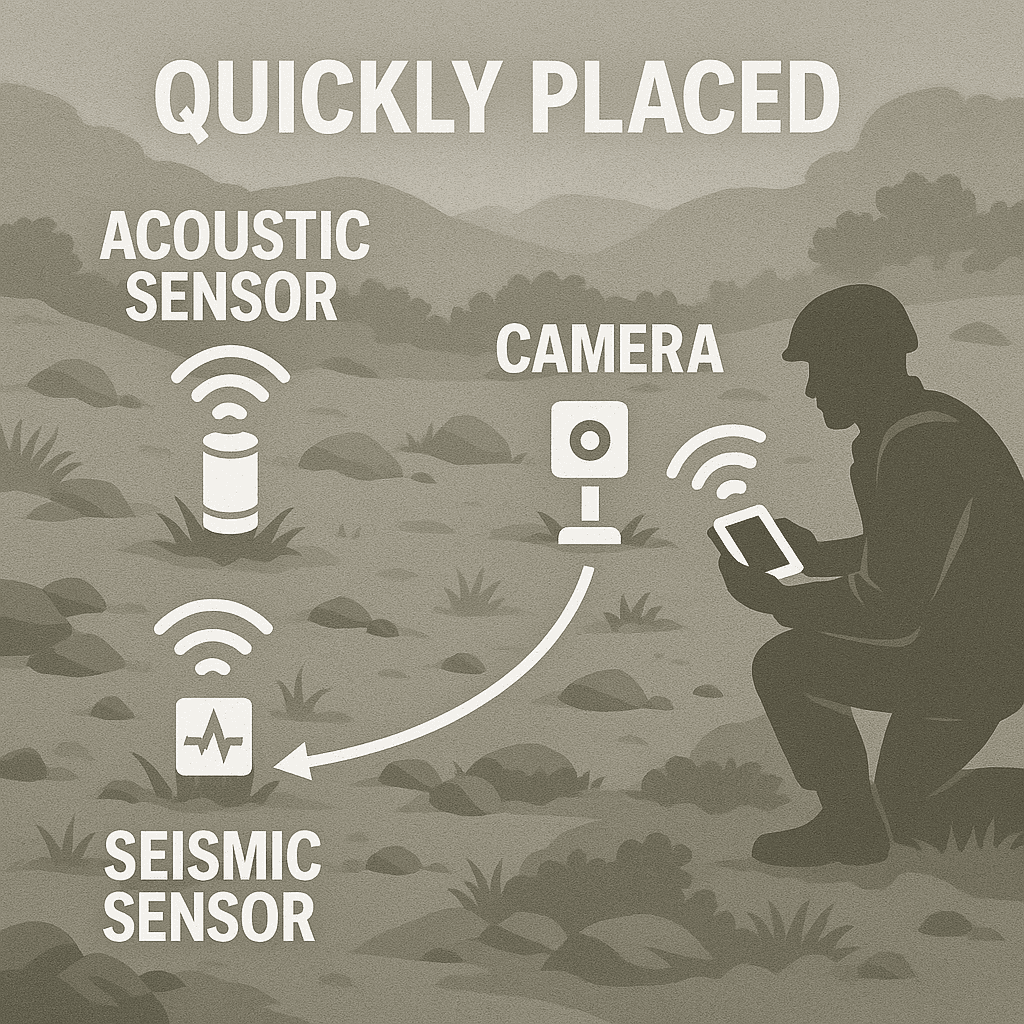Transforming Any Environment into a Monitored Zone with Rapid Deployment Technology



Introduction: The Need for Speed in Situational Awareness
On the modern battlefield, uncertainty is a constant adversary. Whether establishing a temporary Forward Operating Base (FOB), securing a perimeter, clearing a route, or conducting reconnaissance in unfamiliar territory, the ability to quickly understand the operational environment is paramount. Waiting for extensive infrastructure or prolonged human reconnaissance isn't always feasible or safe. This is where rapid deployment technology comes into play – offering the capability to swiftly transform virtually any environment into a monitored zone, providing crucial situational awareness when and where it's needed most.
These technologies empower units to gain insight into previously unknown areas, detect threats early, and make informed decisions without unnecessarily exposing personnel to risk. It's about achieving information dominance quickly and efficiently, regardless of the terrain or complexity of the environment.
What Constitutes Rapid Deployment Monitoring Technology?
This isn't a single device, but rather an ecosystem of interconnected components designed for speed, portability, and effectiveness:
-
Unattended Ground Sensors (UGS): These are the cornerstone. Small, often camouflaged sensors designed to detect specific phenomena:
- Seismic Sensors: Detect vibrations from footsteps or vehicles.
- Acoustic Sensors: Listen for sounds like voices, engines, or weapon fire (potentially using AI sound recognition for classification).
- Magnetic Sensors: Detect the metallic mass of vehicles or weapons.
- Passive Infrared (PIR) / Thermal Sensors: Detect body heat or thermal signatures of vehicles.
- Imaging Sensors (EO/IR): Low-power cameras triggered by other sensors to provide visual confirmation.
- (These are often designed for low power consumption and long endurance.)
-
Sensor Nodes & Gateways: Individual sensors often communicate wirelessly (e.g., via mesh networks) to local nodes or gateways. These consolidate data and relay it back to a command element.
-
Communication Links: Secure and resilient communication is vital. This can range from short-range radio within the sensor field to satellite communications (SATCOM) or integration with existing tactical networks for long-haul transmission. Low Probability of Intercept/Detection (LPI/LPD) characteristics are often crucial.
-
Power Sources: Extended battery life, solar recharging capabilities, or integration with field power generation are essential for persistent monitoring.
-
Data Processing & Display: Information needs to be presented intuitively. This might involve alerts on a ruggedized tablet, integration into a Common Operating Picture (COP), or even alerts pushed to individual soldier devices. Edge computing (processing data near the sensor) and AI algorithms can filter noise and prioritize alerts.
Key Advantages of Rapid Deployment Monitoring:
- Speed: Systems can often be deployed by small teams (or even air-dropped/delivered by drone) in minutes or hours, not days, providing near-instantaneous feedback.
- Flexibility & Scalability: Kits can be tailored to the specific mission – monitoring a single trail, a wide perimeter, or a key chokepoint. Sensor fields can be easily expanded or relocated as the situation changes.
- Reduced Risk to Personnel: Establishes standoff surveillance, reducing the need for physical patrols in potentially dangerous areas, directly enhancing force protection.
- Persistence: Provides continuous monitoring capabilities, 24/7, regardless of weather or visibility conditions that might hinder human observation.
- Force Multiplication: Allows small teams to cover larger areas or monitor multiple locations simultaneously.
- Covertness: Sensors are often designed to be small and easily concealed, minimizing their signature.
Operational Use Cases:
The applications are numerous:
- Route Reconnaissance: Deploying sensors ahead of convoys to detect potential ambush sites or IED activity.
- Perimeter Security: Quickly establishing an electronic detection line around temporary positions (patrol bases, LZs, assembly areas).
- Border Monitoring: Providing persistent surveillance in remote or difficult-to-patrol border regions.
- Special Operations Support: Offering overwatch and early warning for insertion/extraction points or target locations.
- Critical Infrastructure Protection: Temporarily monitoring key facilities or installations.
- Gap Filling: Supplementing existing ISR assets or monitoring areas outside their coverage.
Integration with Broader Situational Awareness Tools
The true power of these rapidly deployed monitored zones is realized when their data is integrated into the larger C4ISR picture. Sensor alerts gain significant context when overlaid with:
- ISR Feeds: Correlating ground sensor hits with UAV footage or other intelligence.
- Blue Force Tracking (BFT): This is critical. Knowing the real-time location of friendly forces, provided by systems like Unbound Autonomy's wearable BFT technology, is essential to deconflict sensor alerts. A seismic hit means something very different if a friendly patrol is known to be in the area versus if the area should be clear. This integration prevents false alarms and, more importantly, reduces fratricide risk.
- Command and Control Systems: Feeding alerts and processed data directly into the COP allows commanders to make faster, better-informed decisions based on a holistic view of the battlespace.
Challenges and Considerations
While powerful, these systems aren't without challenges, including power management, potential for discovery and countermeasures (jamming, spoofing), data filtering to avoid overload, and the need for effective concealment strategies. Continuous technological advancement focuses on mitigating these factors.
Conclusion: Shrinking the Unknown
Rapid deployment technology fundamentally changes the equation for achieving situational awareness. It empowers military forces to quickly reduce uncertainty, transforming unknown and potentially hostile environments into actively monitored zones. By leveraging interconnected sensors, resilient communications, and intelligent data processing – integrated seamlessly with foundational capabilities like Blue Force Tracking – commanders and soldiers gain invaluable insights, enhance force protection, and maintain a critical edge in decision-making speed. In an era defined by rapid change and asymmetric threats, the ability to establish temporary, effective surveillance anywhere, anytime, is a vital capability for mission success.